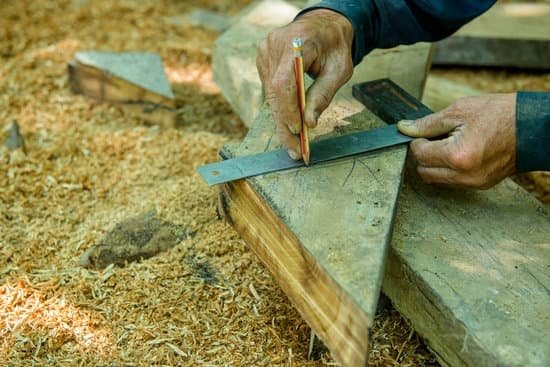Woodworking joiners are essential tools for creating strong and precise joints in woodworking projects. Whether you’re a seasoned woodworker or just starting out, understanding the function and capabilities of a woodworking joiner is key to achieving professional-level results.
In this article, we will delve into the world of woodworking joiners, exploring their purpose, types, benefits, and usage. We will provide you with a comprehensive guide on how to use a joiner effectively while avoiding common mistakes. Additionally, we will introduce you to creative and unconventional joinery techniques that can be achieved with these versatile tools.
Joinery is an integral part of woodworking, as it determines the durability and strength of the final product. However, traditional joinery techniques can be time-consuming and require advanced skills. This is where woodworking joiners come in – they streamline the process by simplifying and automating certain aspects of joinery.
Stay tuned as we take you on a journey through the fascinating world of woodworking joiners. Whether you’re a hobbyist looking to enhance your craft or a professional seeking to improve your efficiency, this article will provide valuable insights and practical tips to help you get the most out of your woodworking projects.
Background on Joinery Techniques
Introduction to Joinery Techniques
Joinery techniques have been a fundamental part of woodworking for centuries, allowing craftsmen to create strong and durable connections between pieces of wood. These techniques involve the meticulous fitting together of different components through various methods to form a solid structure. Traditional joinery techniques are admired for their craftsmanship and reliability, but they also come with certain limitations.
Limited Strength and Durability
Traditional joinery techniques, such as mortise and tenon joints or dovetail joints, rely solely on the physical connection between two pieces of wood. While these methods offer sufficient strength for many applications, they may not be suitable for projects that require exceptional durability or load-bearing capacity. Over time, repeated stress or movement can weaken the joints, compromising the overall integrity of the structure.
Complexity and Time-Intensiveness
Another limitation of traditional joinery techniques is their complexity and time-intensiveness. Crafting intricate mortise and tenon joints or dovetail joints requires precise measurements, skillful cutting, and extensive practice. This level of precision often demands considerable time investment, making it less feasible for large-scale production or projects with tight deadlines.
Adaptation to Modern Woodworking
As woodworking evolved in modern times, new joinery techniques were developed to address the limitations present in traditional methods. Woodworking joiners emerged as versatile tools that could overcome challenges related to strength, efficiency, and ease of use.
By incorporating different types of joiners into their workflow, woodworkers gained access to more options for creating strong connections efficiently. These machines enabled them to produce accurate cuts quickly while ensuring adequate stability and structural integrity in the joined pieces.
In the next section, we will delve deeper into what exactly a woodworking joiner is and its significance in the realm of woodworking projects today.
What is a Woodworking Joiner
A woodworking joiner is a specialized tool used in woodworking projects to create strong and precise joints between two or more pieces of wood. Joinery is an essential aspect of woodworking, as it ensures the structural integrity and aesthetic appeal of finished products. In this section, we will explore the definition and purpose of a woodworking joiner, highlighting its significance in the construction process.
Definition
A woodworking joiner, also known as a jointer or a joinery machine, is a power tool specifically designed for creating joints in wood. It consists of a flat table with an adjustable fence and a cutting head that contains multiple knives or blades. The primary function of a joiner is to flatten and straighten edges and surfaces of wooden boards, allowing for accurate and seamless joining.
Purpose
The main purpose of using a woodworking joiner is to achieve smooth and sturdy connections between wooden pieces. These connections can be simple butt joints, where the end grain of one piece is attached to the long grain of another piece, or more complex joints such as miter joints, dowel joints, or tongue-and-groove joints.
By utilizing a joiner to prepare the wood surfaces before joining, woodworkers can ensure flatness, squareness, and consistency in their workpieces. This not only enhances the visual appeal of the final product but also improves its strength and durability. With precise joints created by a joiner, woodworkers can create furniture, cabinetry, flooring, and other wooden projects that stand the test of time.
Moreover, using a woodworking joiner allows woodworkers to work with reclaimed or rough-sawn lumber that may have irregular edges or surfaces. By accurately dimensioning these pieces with a joiner before joining them together, woodworkers are able to transform raw materials into refined creations while minimizing waste.
The Different Types of Woodworking Joiners
Woodworking joiners come in a variety of types, each with its own unique features and applications. Understanding the different types of joiners can help woodworkers choose the right tool for their specific projects.
- Biscuit Joiners: Also known as plate joiners, biscuit joiners are commonly used to create strong joints in panels and tabletops. These joiners work by cutting small slots or mortises in the edges of two pieces of wood and then inserting an oval-shaped wooden biscuit into the slots. When glue is applied, the biscuit swells, creating a tight bond between the two pieces.
- Dowel Joiners: Dowel joinery involves creating holes in two pieces of wood and then inserting cylindrical wooden dowels into those holes. This type of joinery is often used for aligning and reinforcing joints, such as those in furniture construction. Dowel joiners typically come with alignment pins to ensure accurate hole placement.
- Pocket Hole Joiners: Pocket hole joinery is a popular method for quickly and easily joining pieces of wood at an angle. It involves drilling a pocket hole at an angle into one piece of wood and then using screws to attach it to another piece. Pocket hole joinery is frequently used in cabinetmaking, furniture assembly, and other woodworking projects that require strong joints.
Each type of woodworking joiner has its advantages and limitations depending on the project at hand. Biscuit joiners excel at creating strong joints in wide panels, while dowel joiners are ideal for aligning and reinforcing joints that need extra strength. Meanwhile, pocket hole joinery offers speed and ease when joining pieces at angles.
When deciding which type of woodworking joiner to use, consider factors such as joint strength requirements, desired aesthetics, project complexity, and personal preference. Some projects may benefit from a combination of different types of joinery techniques to achieve optimal results.
Overall, having knowledge about the different types of woodworking joiners empowers woodworkers to choose the right tool for their specific needs, ensuring precise and durable joints in their projects.
Benefits of Using a Woodworking Joiner
Woodworking joiners offer several benefits that make them valuable tools for woodworkers. One of the key advantages of using a woodworking joiner is the increased precision it provides in joinery. Joiners are designed to create accurate and consistent cuts, ensuring that the pieces being joined fit together seamlessly. This level of precision is especially important when creating furniture or other woodworking projects where tight and precise joints are crucial for structural integrity and aesthetic appeal.
In addition to precision, woodworking joiners also offer increased efficiency in the joinery process. These machines are specifically designed to streamline the task of creating various types of joints, such as biscuit joints, dowel joints, or pocket holes.
By using a joiner, woodworkers can save time by avoiding manual measurements and cuts, as well as reducing the need for additional tools or clamps during assembly. The efficiency gained from using a woodworking joiner allows woodworkers to complete projects more quickly and effectively.
Furthermore, utilizing a woodworking joiner can significantly enhance the strength and durability of joints. Joiners create strong connections between wood pieces by utilizing specific joining techniques that maximize the surface area for bonding. For example, biscuit joiners use oval-shaped wooden biscuits inserted into precisely cut slots on each piece being joined, creating a strong bond when glue is applied.
Similarly, dowel joiners drill matching holes into the pieces to be joined and insert dowels that reinforce the connection. These methods ensure that the joint remains sturdy and stable over time.
Overall, incorporating a woodworking joiner into your woodworking projects offers numerous advantages including increased precision, efficiency in production time, and enhanced strength in your joints. These benefits enable woodworkers to create high-quality pieces with ease while saving time and effort in the process.
| Advantages |
|---|
| Precision |
| Efficiency |
| Strength |
Step-by-Step Guide
A woodworking joiner is a valuable tool that can greatly enhance the precision and efficiency of your joinery projects. Whether you are a beginner or an experienced woodworker, learning how to properly use a woodworking joiner is essential for creating accurate and durable joints. In this step-by-step guide, we will break down the process of using a joiner, from setting up the machine to achieving excellent results.
- Prepare your workspace: Before beginning any woodworking project, it is crucial to ensure that you have a clean and organized workspace. Clear your workbench of any debris or tools that may hinder your movements while operating the joiner. Also, make sure that you have sufficient lighting to clearly see the details of your work.
- Set up the joiner: Begin by familiarizing yourself with the different components of your woodworking joiner, such as the depth control knob and fence adjustment knobs. Adjust these settings according to your project requirements; for example, if you are joining two pieces of thin plywood, you will need a smaller depth setting compared to thicker wooden boards.
- Marking and alignment: Use a pencil or marking tool to accurately mark where the joints should be made on the workpieces. Take precise measurements and use a square or straight edge to ensure that your markings are aligned correctly. This step is crucial for ensuring accurate cuts and successful joint assembly later on.
- Make the cuts: With all preparations in place, carefully guide your workpiece into the joiner’s cutting area, ensuring it rests securely against both the fence and baseplate surfaces. Activate the joiner’s motor and gently lower it onto the workpiece while maintaining steady pressure against its surface. Move slowly along the intended path of each cut until all desired joints have been made.
- Test fit and assemble: Once all cuts have been made, it is important to test fit each joint by assembling the pieces together before applying any glue or other adhesives. This step allows you to identify any adjustments that may be necessary for a perfect fit. If everything aligns properly, proceed with gluing and securing the joint according to your project’s requirements.
By following these steps, you can greatly increase your woodworking joinery skills and achieve accurate and durable joints using a woodworking joiner. Practice makes perfect, so take the time to familiarize yourself with the machine and experiment with different techniques on scrap wood before tackling your actual projects. Remember to always prioritize safety by wearing appropriate protective gear and ensuring that the joiner is in good working condition before use.
Common Mistakes to Avoid When Using a Woodworking Joiner
Using a woodworking joiner can greatly enhance the quality and efficiency of your woodworking projects. However, like any tool, it is important to use a joiner correctly in order to achieve optimal results. Beginners may encounter some common mistakes when using a joiner for the first time. By being aware of these mistakes and following some simple guidelines, you can avoid costly errors and ensure successful joinery.
One common mistake that beginners often make when using a woodworking joiner is not properly securing the workpiece. It is crucial to firmly clamp or hold down the workpiece before making any cuts or joints. Failing to secure the workpiece can lead to inaccurate cuts and potentially dangerous situations.
Another mistake to avoid is rushing the cutting or joining process. It is important to take your time and follow the proper procedures for setting up the joiner and making precise cuts. Rushing can result in sloppy joints or even damage to the tool itself.
Lastly, beginners may overlook the importance of maintaining sharp cutter blades on their joiner. Dull blades can lead to rough cuts or tear-out, which can negatively impact the strength and appearance of your joints. Regularly inspecting and sharpening or replacing blades is essential for achieving clean and professional results.
To prevent these common mistakes when using a woodworking joiner as a beginner, here are some helpful tips:
- Always secure your workpiece firmly before making any cuts or joints.
- Take your time and carefully follow the setup instructions provided by the manufacturer.
- Use sharp cutter blades, and regularly inspect and maintain them for optimal performance.
- Practice on scrap pieces of wood before working on your actual project.
- Seek guidance from experienced woodworkers or consult instructional resources for additional tips on using a joiner effectively.
By avoiding these common mistakes and practicing proper techniques, you can ensure that your woodworking joiner becomes a valuable tool in your workshop. Remember to always prioritize safety and precision when using any power tool. With practice and patience, you will be able to create strong and beautiful joints for your woodworking projects.
| Common Mistakes | Tips to Avoid Them |
|---|---|
| Not properly securing the workpiece | Firmly clamp or hold down the workpiece before making cuts or joints |
| Rushing the cutting or joining process | Take your time and follow proper setup procedures |
| Using dull cutter blades | Regularly inspect and maintain sharp blades for clean cuts |
| Not practicing on scrap pieces before working on actual projects | Practice on scrap wood to gain familiarity with the joiner’s movements and settings. |
Exploring Creative Joinery Techniques
Woodworking joiners are not only practical tools for creating strong and precise joints, but they can also be used to achieve unique and artistic joinery techniques. By employing a woodworking joiner, woodworkers have the opportunity to explore creative methods that can elevate their projects to new levels of craftsmanship. Two examples of such techniques are butterfly and finger joints.
Butterfly joints, also known as bowtie or Dutchman joints, are decorative inlays used to strengthen and enhance the appearance of a joint. They consist of two interlocking pieces of wood in the shape of a butterfly or bowtie.
The woodworking joiner allows for precise and accurate cuts, ensuring a seamless fit between the joint and the butterfly inlay. This technique is often used to repair cracks or splits in wooden pieces while adding an aesthetically pleasing element to the overall design.
Finger joints, on the other hand, create an intricate interlocking pattern between two boards by cutting alternating ridges (fingers) along the edges that fit together like puzzle pieces. This technique not only provides added strength to the joint but also adds visual interest and complexity to the project. With a woodworking joiner, creating finger joints becomes much easier since it allows for precise cutting depth and accuracy while ensuring consistent spacing between each finger.
By exploring these unconventional joining methods, woodworkers can truly showcase their creativity and craftsmanship using a woodworking joiner. These techniques add distinct details that elevate their projects from ordinary furniture pieces to unique works of art. It is important to note that mastering these techniques may require practice and patience, but the results will undoubtedly impress both craftsmen and admirers alike.
Tips for Selecting the Right Woodworking Joiner
When it comes to selecting the right woodworking joiner, there are several key factors to consider. These factors can greatly impact the success and efficiency of your woodworking projects. By taking the time to evaluate your budget, project requirements, and brand reputation, you can ensure that you make an informed decision when purchasing a joiner.
- Budget: One of the first factors to consider is your budget. Woodworking joiners come in a range of prices, so it’s important to determine how much you are willing to invest. Keep in mind that while cheaper models may be more affordable upfront, they may lack durability or precision. It’s important to find a balance between cost and quality.
- Project Requirements: Another crucial factor is identifying your specific project requirements. Consider the type of joints you will be creating and the materials you will be working with. Different woodworking joiners excel at different types of joints, so choose one that aligns with your specific needs.
- Brand Reputation: Lastly, consider the reputation of the brand before making your purchase. Look for brands that have a history of producing high-quality woodworking joiners with excellent customer reviews and ratings. Reliable brands often offer warranties or after-sales support, which can be valuable if any issues arise with your joiner.
By carefully considering these factors, you can confidently select a woodworking joiner that meets your needs and helps you achieve precise and durable joints in your projects. Remember, investing in a quality joiner can save you time and frustration in the long run while enhancing the overall quality of your woodworking craftsmanship.
Conclusion
In conclusion, woodworking joiners play a crucial role in the world of woodworking by providing efficient and precise joinery solutions. Throughout this article, we have explored the definition and purpose of a woodworking joiner, as well as different types of joiners and their unique features and applications. It is evident that using a woodworking joiner offers numerous benefits, including increased precision, efficiency, and strength in joinery.
A step-by-step guide was provided to ensure that beginners understand how to use a woodworking joiner effectively. By avoiding common mistakes and learning about creative joinery techniques, woodworkers can elevate their projects to new heights. Furthermore, tips for selecting the right woodworking joiner were shared, emphasizing the importance of considering factors such as budget, project requirements, and brand reputation.
It is our hope that this article has equipped you with the knowledge needed to explore the world of joinery in your woodworking endeavors. Joinery techniques are not only functional but also offer opportunities for artistic expression. By utilizing a woodworking joiner correctly, you can elevate your craftsmanship and create pieces that reflect your true creativity.
Whether you are an experienced woodworker or just starting out on your journey, incorporating a woodworking joiner into your toolkit will undoubtedly enhance your projects and allow you to achieve precise and durable joints. So go ahead and dive into the world of joinery – you may be surprised at just how transformative it can be for your woodworking skills.
Frequently Asked Questions
What does a joiner actually do?
A joiner, also known as a jointer, is a woodworking tool used to flatten and square the edges of lumber or boards. Its main purpose is to ensure that the two adjoining surfaces are perfectly aligned and have a seamless fit when joining them together.
The joiner achieves this by using rotating blades or knives to remove thin layers of wood from the uneven or rough edges, resulting in smooth, straight, and accurately parallel edges. Joiners are commonly used in woodworking projects such as cabinetry, furniture making, and carpentry.
What are the rules for jointer?
The rules for using a jointer involve several safety precautions and operational guidelines. First and foremost, it is crucial to read and understand the manufacturer’s instructions before operating a jointer to ensure safe usage. Eye protection should always be worn while working with a jointer since there is a risk of wood chips or debris being thrown towards the operator.
It is essential to keep both hands on the material being fed into the jointer, maintaining a firm grip throughout the process. Other rules include feeding the workpiece against the rotation of the cutterhead, using push blocks or sticks to guide smaller pieces safely past the cutting area, and ensuring that loose clothing or accessories cannot get entangled with moving parts.
What is the difference between a joiner and a planer?
While both joiners (or jointers) and planers are woodworking machines used for shaping wood surfaces, they serve different purposes. A joiner primarily focuses on creating flat and square edges on boards before joining them together, ensuring proper alignment and tight-fitting joints during assembly. It removes small amounts of material from uneven surfaces but does not substantially alter thicknesses.

Hi everyone! I’m a woodworker and blogger, and this is my woodworking blog. In my blog, I share tips and tricks for woodworkers of all skill levels, as well as project ideas that you can try yourself.





